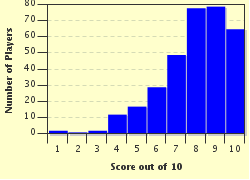Quiz Answer Key and Fun Facts
1. I must get better at digging: my first tunnel ended in the water off the Chinese shore. I managed to swim to the surface but racing towards me I saw several long narrow boats with weird monster heads, and I just knew they'd hit me with a paddle. What boats are a Chinese tradition now raced all over the world?
2. I dug a new way into China and found myself face to face with another long creature, with four legs under a long body, and a brightly painted head with lots of fur. This prancing creature seemed to be celebrating something and there were drums and cymbals playing too. What had I hopped into?
3. I dug a new branch of my tunnel into China but when I looked out there were people burning money and putting food out in the street! They talked about their relatives returning from the dead and how they needed to feed them so they could return to hell and wouldn't bring bad luck to the living. What do the Chinese call this time of placating the returning spirits?
4. I tunneled my way into a Chinese street, full of people going clickety click click click clickety... they had enough small tiles to pave my bathroom! "I'll take that dragon to match this dragon, click, that bamboo matches this bamboo, clickety, that orchid matches this plum, click, click..." What ancient Chinese game were they playing?
5. I had tunneled so far into China that I really needed a drink. The stall on the corner had a sign advertising 'pearl tea' but when I got closer I saw that the tea leaves had been rolled into small pellets which looked as though they might blow my tunnel sky high! What is the usual English term for this sort of tea?
6. I had been digging my tunnel to China in the dark when I realized there was an easy way to solve that problem, I could order some Chinese lanterns! As my tunnel was small, I ordered some of the smallest lanterns available but when they arrived I wished I'd also ordered some safety pins and talcum powder. What is the smallest Chinese lantern size called?
7. As I was tunneling into China I realized that my detour to the southern province of Jiangxi was going through a different sort of soil. I was digging through a clay mineral that is used in toothpaste, paint, cosmetics, medicine, and most importantly in Chinese ceramics. Often known as China Clay, what is another name for the material which gave the white, translucent effect to Chinese porcelain?
8. Digging my way into China wasn't going to be easy if I kept meeting tangled roots so I looked above ground to see what plants were holding me up. Mulberries, I knew it! There were caterpillars everywhere so I decided to get some shirts made. If you think about it for a non-cotton-picking minute you too might know what spins its magic after eating mulberry leaves?
9. I dug my way into Imperial China and came up for air outside a former palace. There were two Chinese guardian lions right in front of me and they looked ready to pounce! Then I realized they were made of marble, one male, one female. What Chinese concept of dark and light do the guardian lions represent, always curving around, and dependent on, each other?
10. I stopped digging into China when they made it plain I wasn't welcome. A Shaolin monk came at me with a long pole which he was clearly using belligerently, a bit like Little John in the Robin Hood stories. I shot back into my tunnel in case he shot me with his wooden staff, for which the proper Chinese name is... ?
Source: Author
flopsymopsy
This quiz was reviewed by FunTrivia editor
stedman before going online.
Any errors found in FunTrivia content are routinely corrected through our feedback system.

